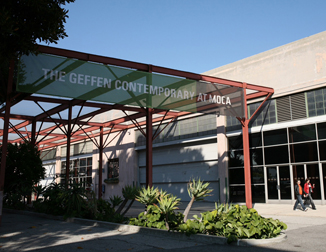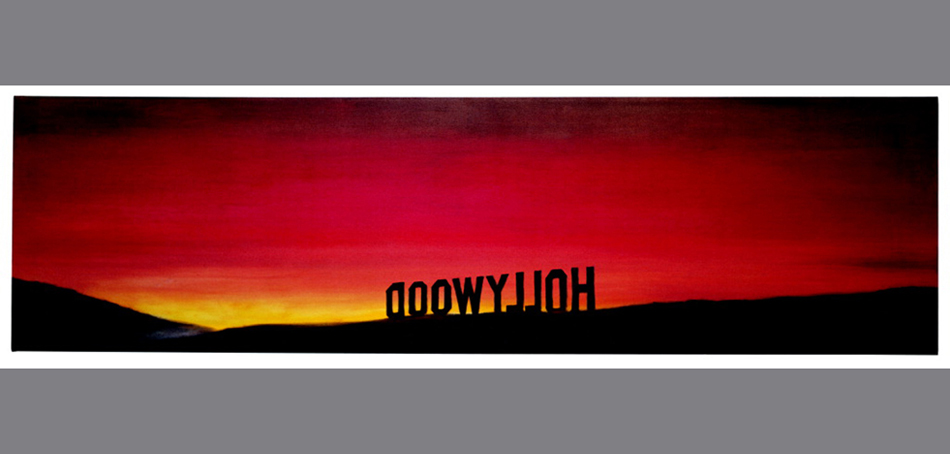
The Back of Hollywood (1977)
Ed Ruscha
Edward Ruscha’s The Back of Hollywood (1977) is one of several paintings of the iconic Hollywood sign that he made in the 1970s and '80s. The artist has recalled that he used the sign, which was visible from his Venice studio, as an indicator of the weather—if he could see it on a given day, that meant the Los Angeles smog wasn’t so bad. Beginning his career as a commercial artist, Ruscha is perhaps best known for works in which text stands in for his chosen subject. In this work, the Hollywood sign is both text and an actual geographical feature. As he explained, “The Hollywood sign is actually a landscape in a sense. It’s a real thing and my view of it was really a conservative interpretation of something that exists, so it almost isn’t a word in a way—it’s a structure.” The work’s extreme horizontal format and saturated colors are reminiscent of a classic CinemaScope film, such that its subject is imbued with same the glamour and illusion of the movies that helped to make it famous.
Oil on canvas 22 x 80 in
Collection of Musee d'Art Contemporain de Lyon, France, courtesy of the artist
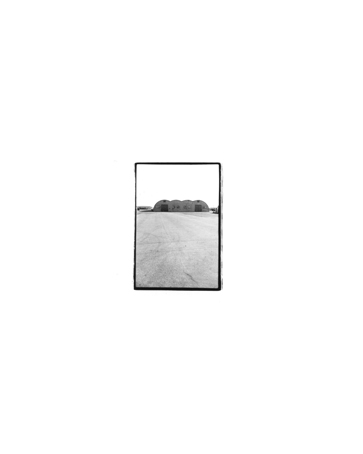
Untitled (#312 A) (1975)
Judy Fiskin
Gelatin silver print, edition 1/6 7 x 5 in. (actual image size: 2 3/4 x 2 in.)
The Museum of Contemporary Art, Los Angeles. Purchased with funds provided by an anonymous donor

Untitled (#312) (1975)
Judy Fiskin
Gelatin silver print, edition 2/6 5 x 7 in
The Museum of Contemporary Art, Los Angeles. Purchased with funds provided by an anonymous donor

Untitled (#309) (1975)
Judy Fiskin
Gelatin silver print, edition 1/6 5 x 7 in
The Museum of Contemporary Art, Los Angeles. Purchased with funds provided by an anonymous donor
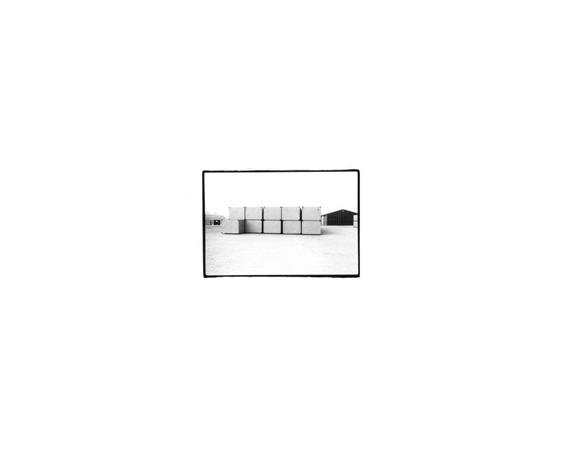
Untitled (#310) (1975)
Judy Fiskin
Gelatin silver print, edition 1/6 5 x 7 in
The Museum of Contemporary Art, Los Angeles. Purchased with funds provided by an anonymous donor

Untitled (#307) (1975)
Judy Fiskin
Gelatin silver print, edition 1/6 7 13/16 x 9 3/4 x 5/8 in
The Museum of Contemporary Art, Los Angeles. Purchased with funds provided by an anonymous donor
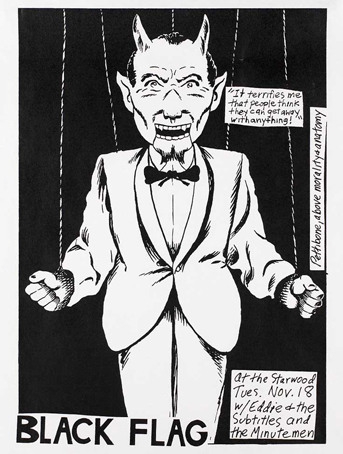
It Terrifies Me... (1980)
Raymond Pettibon
Print on paper 11 x 8 1/2 in
The Museum of Contemporary Art, Los Angeles. Gift of Barry Sloane
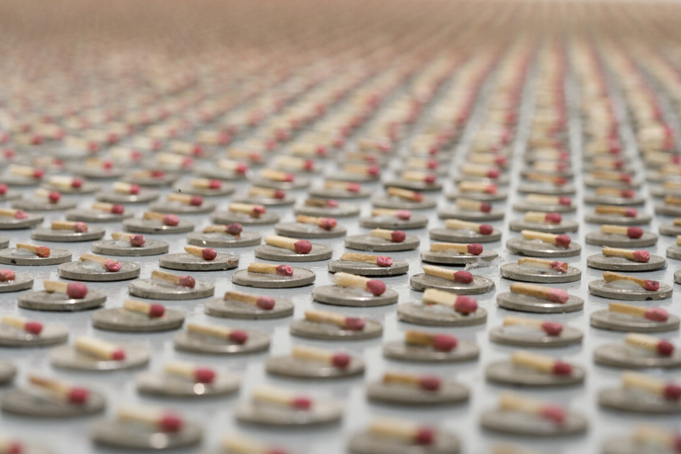
The Reason for the Neutron Bomb (1979)
Chris Burden
50,000 nickels and 50,000 matchsticks 30 ft. 8 in. x 17 ft. 6 in
Collection of the Museum of Contemporary Art, San Diego
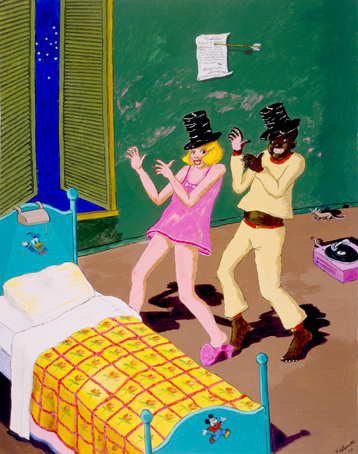
My Shadow (1977)
Robert Colescott
Acrylic on canvas 84 x 66 1/8 in
Collection of Oakland Museum of California, Gift of Mrs. Elizabeth Ross
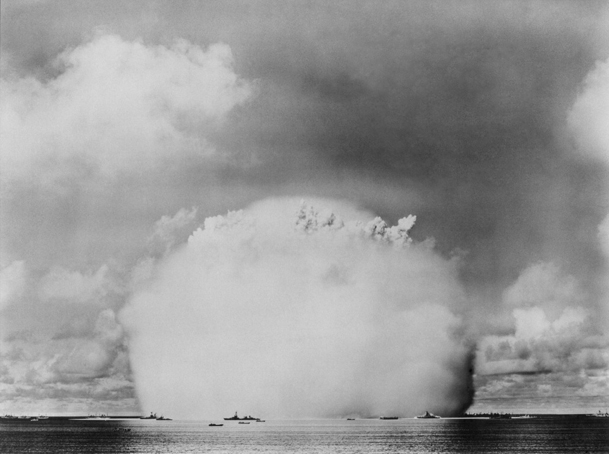
Crossroads (1976)
Bruce Conner
Bruce Conner’s Crossroads (1976) was made one year after the fall of Saigon, an event that marked the end of American fighting in Vietnam. The video features government archival footage of the United States Military’s nuclear weapons testing program Operation Crossroads, which was carried out in Bikini Atoll during the summer of 1946. Over the course of thirty-six minutes, the work depicts the mushroom cloud from an underwater bomb blast unfolding in extreme slow motion, accompanied by a soundtrack that alternates between incidental noises and explosions, and minimalist music composed by Patrick Gleeson and Terry Riley. Crossroads is a poetic meditation on the unfathomable destruction brought on by the Atomic Age, as well as the effects of both the Cold War and the Vietnam War on the American psyche.
Installation with sound, 36 min Dimensions variable
The Conner Family Trust, Los Angeles
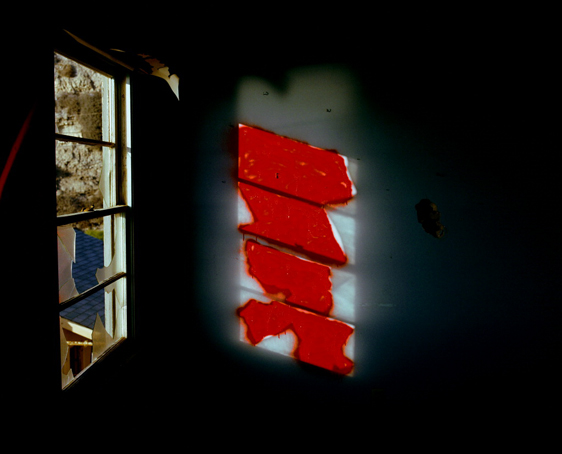
Zuma #5, from the Zuma Series (1977/2006)
John Divola
Archival pigment on rag paper 24 x 30 in
Courtesy of the artist
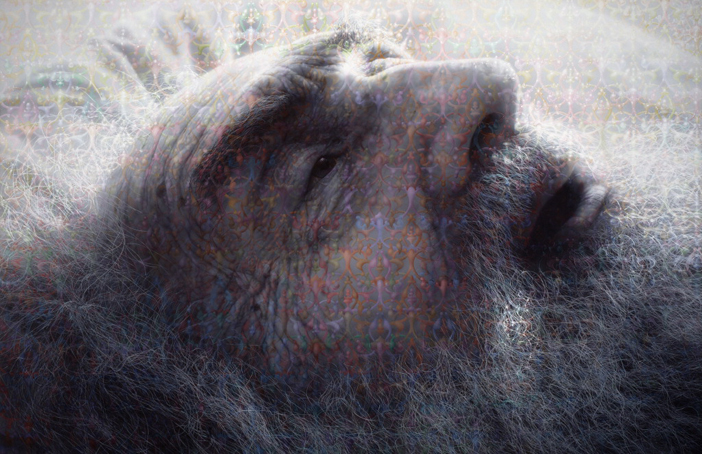
Portrait of My Father (1972-79)
Stephen Kaltenbach
Acrylic on canvas 114 x 170 3/4 in
Collection of Crocker Art Museum, purchased with contributions from Gerald D. Gordon, Collectors' Guild, Anne and Malcolm McHenry, Kim Mueller and Robert J. Slobe, James R. Lenarz and other donations

El Grito de Rebelde (1975)
Rupert Garcia
Color silkscreen on white wove paper 26 x 20 in
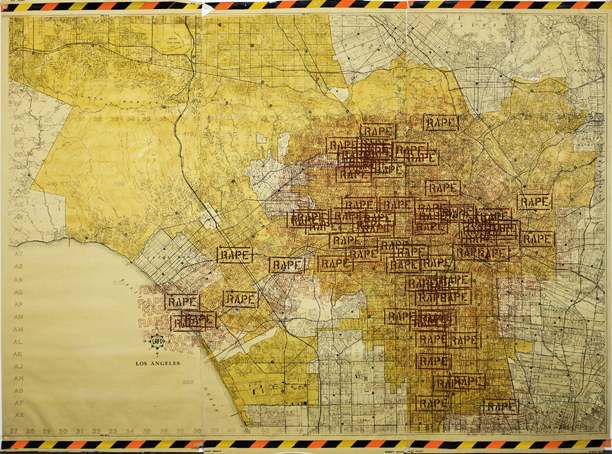
Three Weeks in May (1977)
Suzanne Lacy
Panel, map of Los Angeles, RAPE stamps in red 90 x 44 in
Collection of the artist. Photograph by Grant Mudford

All the Pants I Had Except the Ones I Was Wearing (Front and Back) (1974 / 2010)
Ilene Segalove
Two chromogenic prints 11 x 14 in
Collection of the artist, courtesy Jancar Gallery

All the Pants I Had Except the Ones I Was Wearing (Front and Back) (1974 / 2010)
Ilene Segalove
Two chromogenic prints 11 x 14 in
Collection of the artist, courtesy Jancar Gallery
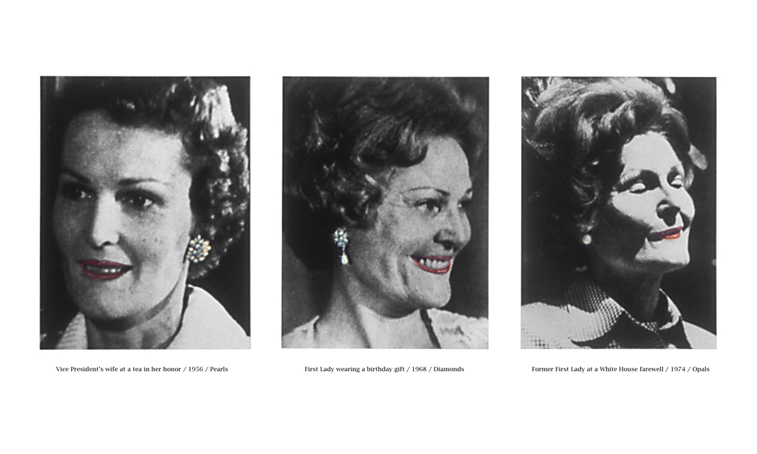
The History of a Woman Is the History of Her Jewelry (1975 / 2010)
Ilene Segalove
Chromogenic print 20 x 33 in
Collection of the artist, courtesy Jancar Gallery


